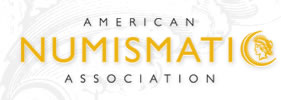 The American Civil War evokes many strong thoughts and emotions to this day – the end of slavery in our country, the great and terrible battles that saw more that 600,000 men perish, and the secession – and eventual reunion – of 11 states. Amid brilliant and incompetent generals, vast military campaigns and political turmoil, the impact of money on the war often gets overlooked.
The American Civil War evokes many strong thoughts and emotions to this day – the end of slavery in our country, the great and terrible battles that saw more that 600,000 men perish, and the secession – and eventual reunion – of 11 states. Amid brilliant and incompetent generals, vast military campaigns and political turmoil, the impact of money on the war often gets overlooked.
"A House Divided: Money of the Civil War," a new exhibit opening Oct. 9 at the American Numismatic Association’s Edward C. Rochette Money Museum, takes a unique look at this epic, bloody time in United States history, while showcasing the era’s coins, paper money, medals, and new ideas in war financing that helped lead to the North’s victory. Visitors will be immersed in the sights and sounds of the war and the era.
The Civil War changed the country forever, including its monetary and economic system: a system based on bullion coinage and privately issued paper money was replaced by a central system based on National Bank notes, and coins and paper money produced and backed by the federal government.
To pay for the war, the North and South were forced to issue huge amounts of money not backed by gold or silver – a fragile concept in the 1860s. Union "greenbacks" (Legal Tender notes and Demand notes, printed with green ink on one side) were instead backed by bonds; an investor could purchase bonds with greenbacks, and then redeem the bonds for gold. The emergence of "war bonds" helped create a more solid economy for the Union; in the Confederacy, where financial systems were underdeveloped, inflation ran rampant and made it impossible to continue the war effort. Because of the success of "war bonds," they were used by the U.S. to control inflation again during both world wars.
Civil War soldiers were supposed to be paid every two months, but were fortunate if they got their pay at four-month intervals. Payment in the Confederate Army was even slower and less regular. Union privates were paid $13 per month at the start of the war.
"With pay as irregular as it was for soldiers, especially for Confederates, you can imagine how important financial support from family could be," said Money Museum Curator Doug Mudd. "Many soldiers relied on ingenuity – or desperation – to get what they needed to survive. Half-starved men with weapons can make life very hard on civilians."
One of the exhibit’s most interesting pieces is an 1864 two cent piece – the first U.S. coin to feature the motto In God We Trust. During the war, heavy casualties created increased religious sentiment, and there was a public outcry to recognize God on U.S. coinage. Initially, Secretary of the Treasury Salmon P. Chase considered the mottos Our Country, Our God and God, Our Trust before authorizing the minting of the two cent piece to include In God We Trust. The motto soon appeared on other denominations, and has been featured on all U.S. coinage since 1938.
Other pieces featured in the exhibit include political campaign tokens, including those used by Republican presidential candidate Abraham Lincoln; and the medal honoring the Union defense of Fort Sumter that was presented to Abner Doubleday, the legendary officer who fired the first Union shot of the war.
"A House Divided: Money of the Civil War" opens Oct. 9 with a free gala reception from 5 to 7 p.m. at the Money Museum, 818 N. Cascade Ave. The reception will include a "Venture Crew: 1861" living history program from the Boy Scouts of America featuring a Confederate Army encampment. Civil War-era music will be provided by the Colorado Springs Conservatory.
The exhibit is sponsored by First Community Bank and runs through Fall 2009.
The Money Museum is open from 9 a.m. to 5 p.m. Tuesday through Friday, 10 a.m. to 5 p.m. Saturday, and noon to 5 p.m. Sunday (closed Monday). Admission is free and group tours are available by calling 719-482-9834.
American Numismatic Association
The American Numismatic Association is a nonprofit educational organization dedicated to encouraging people to study and collect money and related items. The ANA helps its 32,000 members and the public discover and explore the world of money through its vast array of education and outreach programs, as well as its museum, library, publications, conventions and seminars. For more information, call 719-632-2646 or visit www.money.org.





